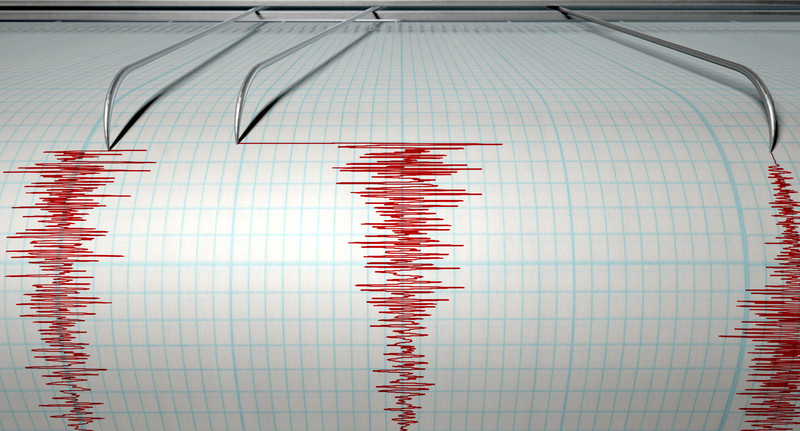What does Earthquakes have to do with math?
You actually need math in order to figure out where the earthquake started, and to be able to read the graphs that measure the intensity of the quake. Let’s take a look at how real scientists use math to figure this out!
First, a little background on earthquakes…
[am4show have=’p8;p9;p11;p38;p92;’ guest_error=’Guest error message’ user_error=’User error message’ ]
When two blocks of the Earth slip past each other suddenly, that’s what we call an earthquake! From a physics point of view, earthquakes are a release of the elastic potential energy that builds up. Most energy is released as heat, not as shaking, during an earthquake. 90% of all earthquakes happen along the Ring of Fire, which is the active zone that surrounds the Pacific Ocean.
The Earth has four main layers: the hard skin on the surface is the crust which extends only 30 miles; the hot magma section is a soupy mass of rock that extends approximately 1800 miles; and the core which is made out of two parts: the hot liquid metal outer core surrounds the solid nickel -iron inner core.
The plates on the crust float on magma, which is a lot like the consistency tar. The crust has seven main tectonic plates that slide around and can either slide apart from each other (called a normal fault that is usually found on the sea floor), collide into each other (called a thrust fault), or move in opposite directions (strike-slip fault) at different speeds. Where the plates are sliding apart on the sea floor, the temperature of the water can rise over 1200oF. Scientists measure the speeds of the plates moving from 1 to 10 inches per year.
There are three different waves that travel through the planet when an earthquake happens. The first waves are the compression-type “P-waves” (primary waves), which travel through the entire planet, including liquid water and solid rock. Most people don’t notice the P-waves, but they do notice the secondary “S-waves”, which follow 60-90 seconds after the P-waves. Following the S-waves are the surface waves, which are like when you wave a bed sheet up and down.
Earthquakes are detected and measured by many different types of instruments, like strain gauges, creep meters, tilt sensors, seismometers, x-ray imagery, and more. These detectors aren’t perfect, though. Earthquake detectors not only discover earthquakes but also glacier movement, nuclear explosions, meteor impacts, and volcano eruptions!
After you watch the video, click the link to do your seismology calculations to figure out both the epicenter and the magnitude of four different earthquakes:
- Japan Earthquake 1995 (map answer)
- Los Prieta California Earthquake 1989 (map answer)
- Mexico Earthquake 1978 (map answer)
- Northridge California Earthquake 1994 (map answer)
If you’d like to measure the Earth’s Magnetic Pulse, you can do that here.
[/am4show]

